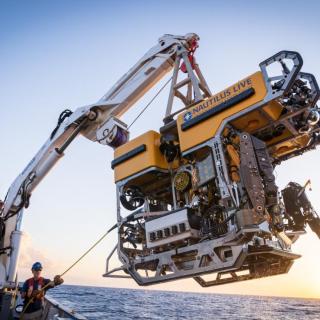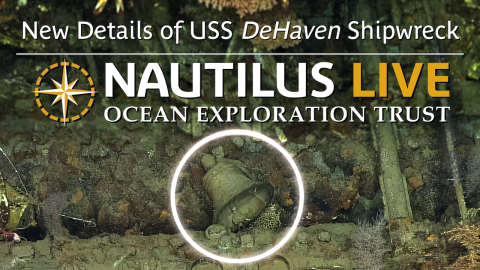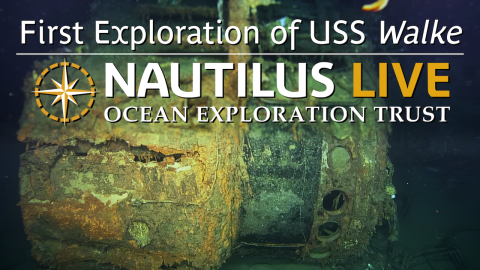Severed Bow of USS New Orleans Discovered in Iron Bottom Sound
The team of scientists and explorers aboard Exploration Vessel Nautilus has located and imaged the bow blown off the World War II heavy cruiser USS New Orleans for the first time. Using Ocean Exploration Trust's ROVs to investigate a target found during seafloor mapping operations by University of New Hampshire’s uncrewed surface vessel DriX, the team found the bow resting at ~675 meters deep in the Solomon Islands’ Iron Bottom Sound and reilluminated this improbable story.
During the November 1942 Battle of Tassafaronga, offshore of Guadalcanal, USS New Orleans was hit by a Japanese ‘Long Lance’ torpedo, catastrophically detonating the forward magazines and tearing off nearly one-third of the ship, including the bow. The explosion killed over 180 crew. Bow-less and flooding, New Orleans was heroically saved by crew members, who stayed at their posts and saved their ship but not themselves, receiving three posthumous Navy Crosses. The ship limped back to the nearby harbor, where, using coconut logs, the crew was able to stabilize New Orleans well enough to sail backward to the United States for permanent repairs.
Over eighty years later, the team imaged the site with onboard archaeologists and experts from all former combatant nations contributing via livestreaming telepresence. Together, this team spotted details in the ship’s structure, painting, and anchor to positively identify the wreckage as New Orleans.
Led by OET President and famed explorer Dr. Robert Ballard, the Maritime Archaeology of Guadalcanal expedition, exploring historically significant shipwrecks in the Iron Bottom Sound is supported by NOAA Ocean Exploration via the Ocean Exploration Cooperative Institute. This exploration is made possible by the expertise, support, and collaboration of many partners, including NOAA Ocean Exploration, U.S. Naval History and Heritage Command, Solomon Islands government, the University of New Hampshire Center for Coastal and Ocean Mapping/Joint Hydrographic Center, and Japanese, Australian, and New Zealand colleagues.

Maritime Archaeology of Guadalcanal: Iron Bottom Sound
Located in the Solomon Islands between the islands of Guadalcanal, Savo, and Nggela, Iron Bottom Sound was the stage of five major naval battles between August and December 1942 which resulted in the loss of over 20,000 lives, 111 naval vessels, and 1,450 planes. These underwater cultural heritage sites now rest on the seafloor offshore Honiara in a confined area less than 25 nautical miles wide, 40 nautical miles long, and 1,400 meters deep.



